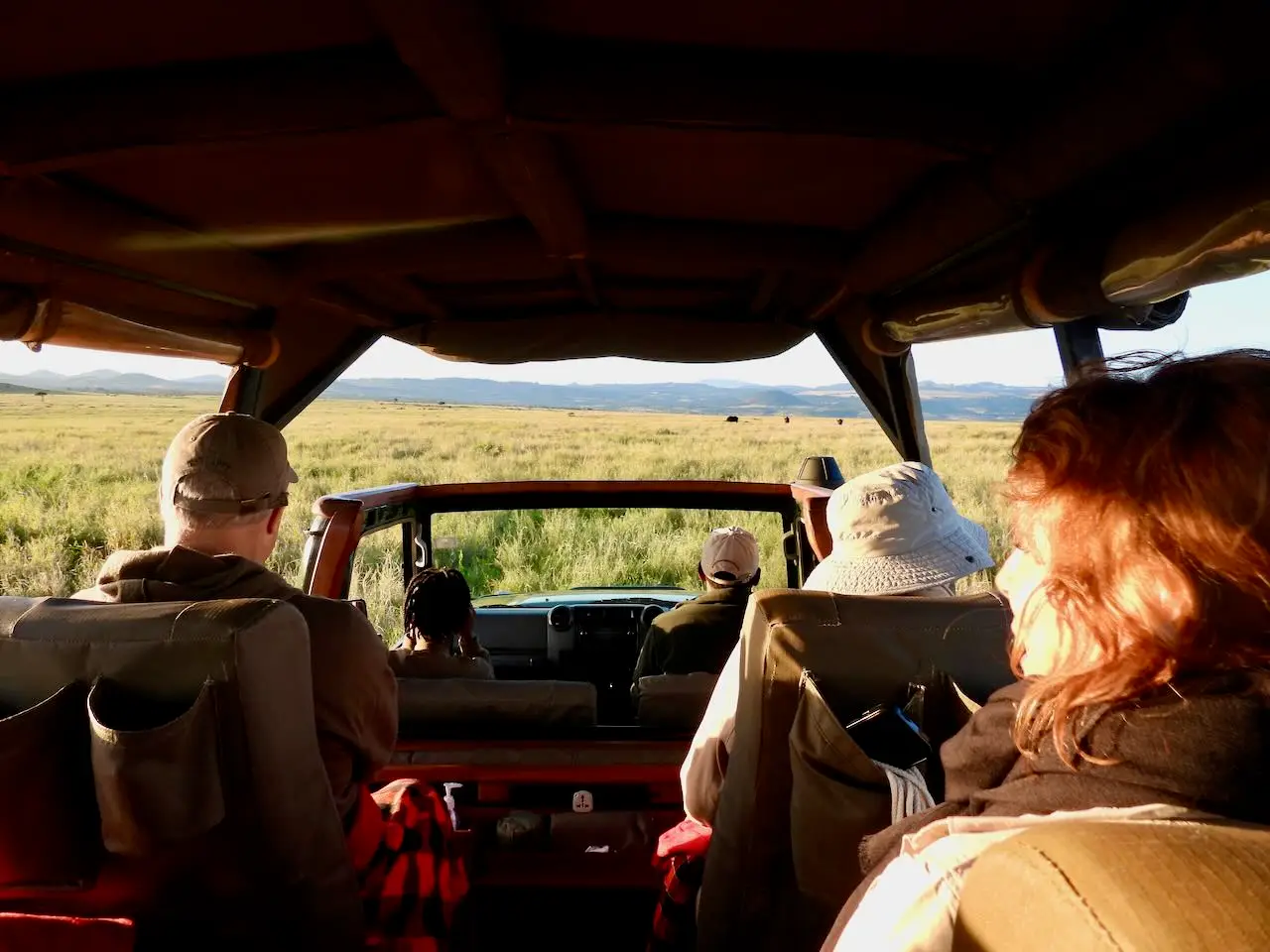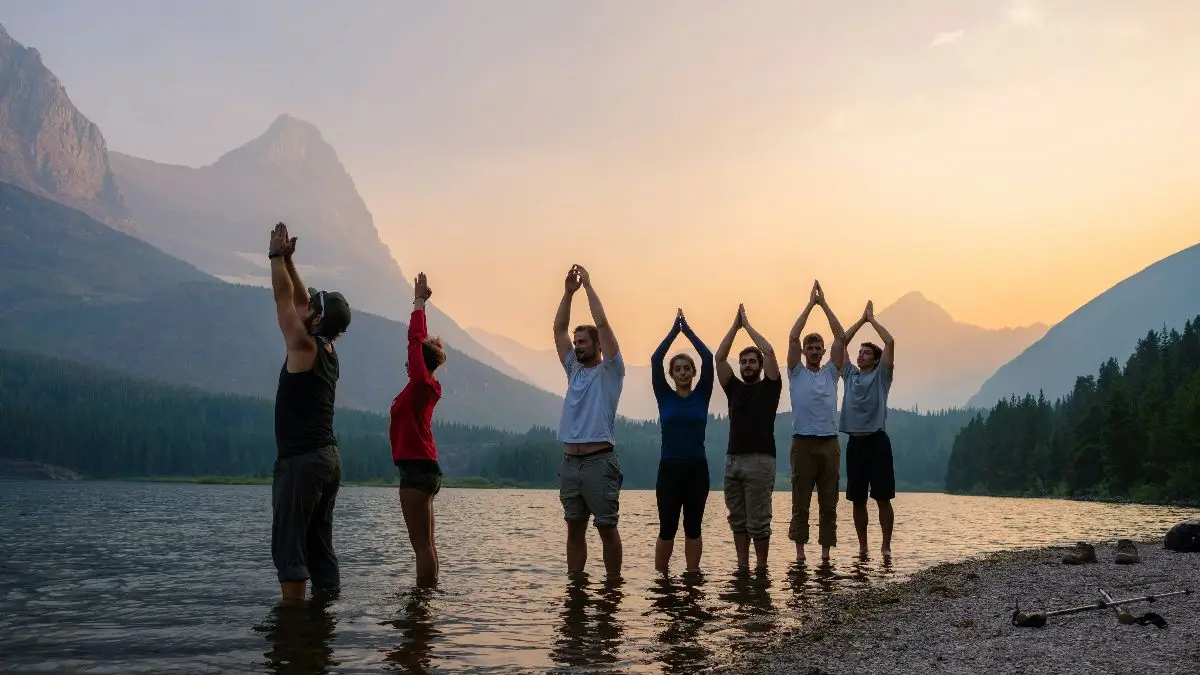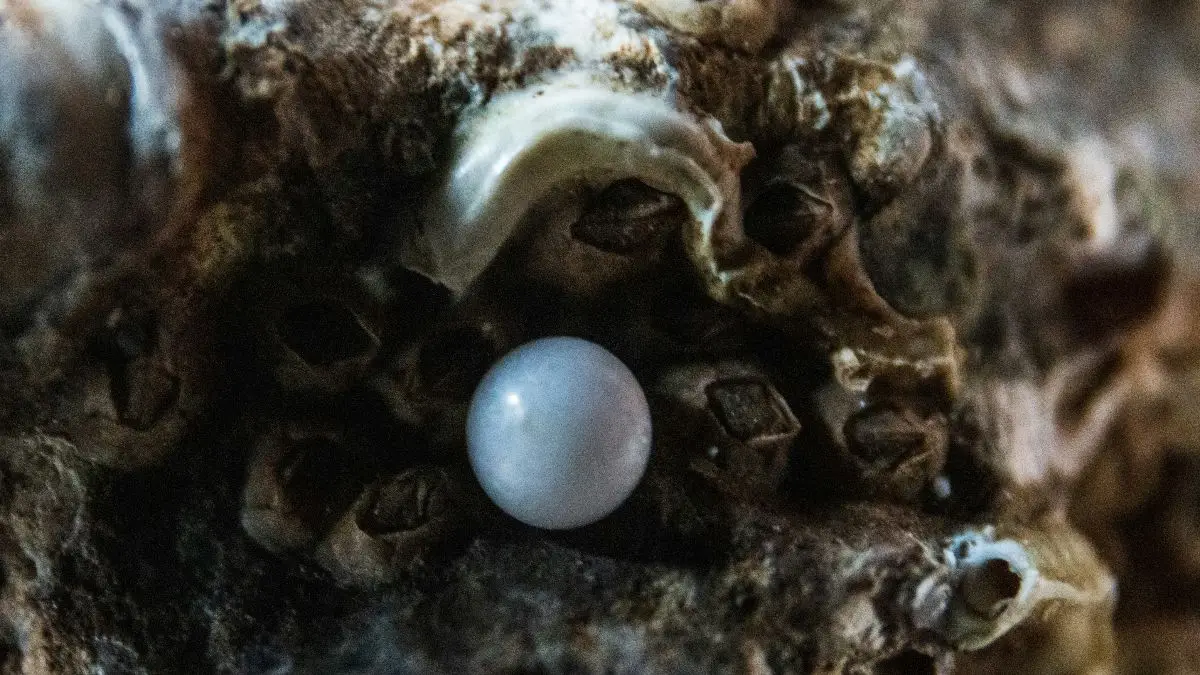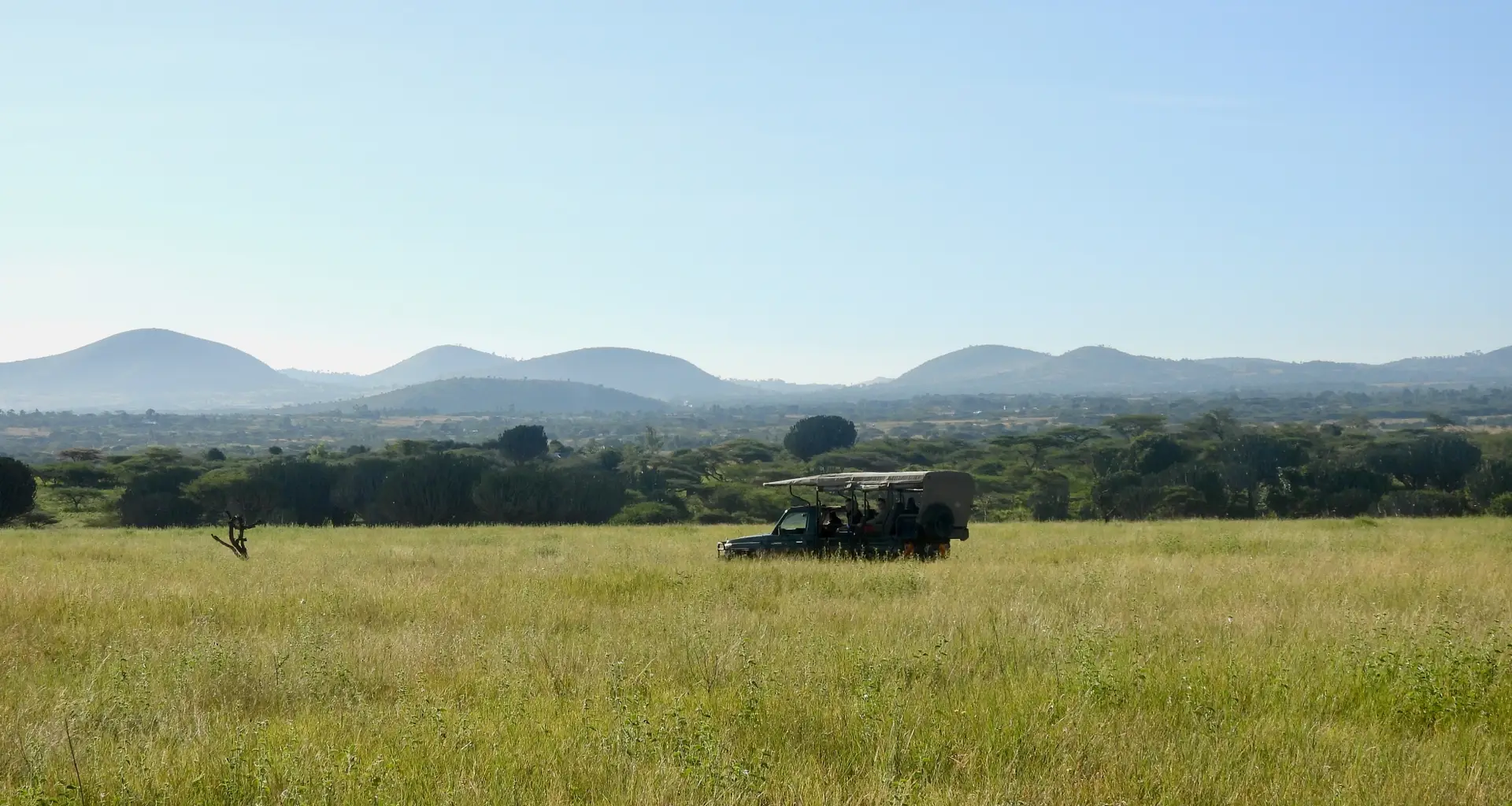Tour Operator Content for Every Stage of the Marketing Funnel
You’re an expert at guiding your travelers through interesting places all over the world and keeping their attention. But are you applying this same level of care to the content you generate throughout the sales and booking process? Tour operators often have plenty of content, but it can be scattered and not aligned with how travelers actually make decisions. For tour operators, having the right travel content strategy is the key to turning curious travelers into loyal customers. A lifecycle marketing funnel helps organize content so that it guides potential guests from the first spark of inspiration to booking a tour — and ensures that they will continue to travel with you. By structuring tour operator content marketing around each stage of the traveler journey, brands can deliver the right message at the right time, whether that’s sparking awareness with destination stories, nurturing interest through detailed itineraries, or encouraging repeat bookings with post-trip engagement.
Organizing content within a tour operator marketing funnel ensures that every blog, email, video, or social post has a clear role in guiding travelers to a decision. Lifecycle marketing for travel brands goes beyond awareness and engagement — it focuses on building trust, reducing booking friction, and creating memorable experiences that drive loyalty. With a well-defined lifecycle plan, tour operators can align their marketing efforts to attract, convert, and retain travelers in a way that maximizes ROI and builds long-term customer relationships.
Here’s how I’d break down a content plan to sell a specific itinerary:
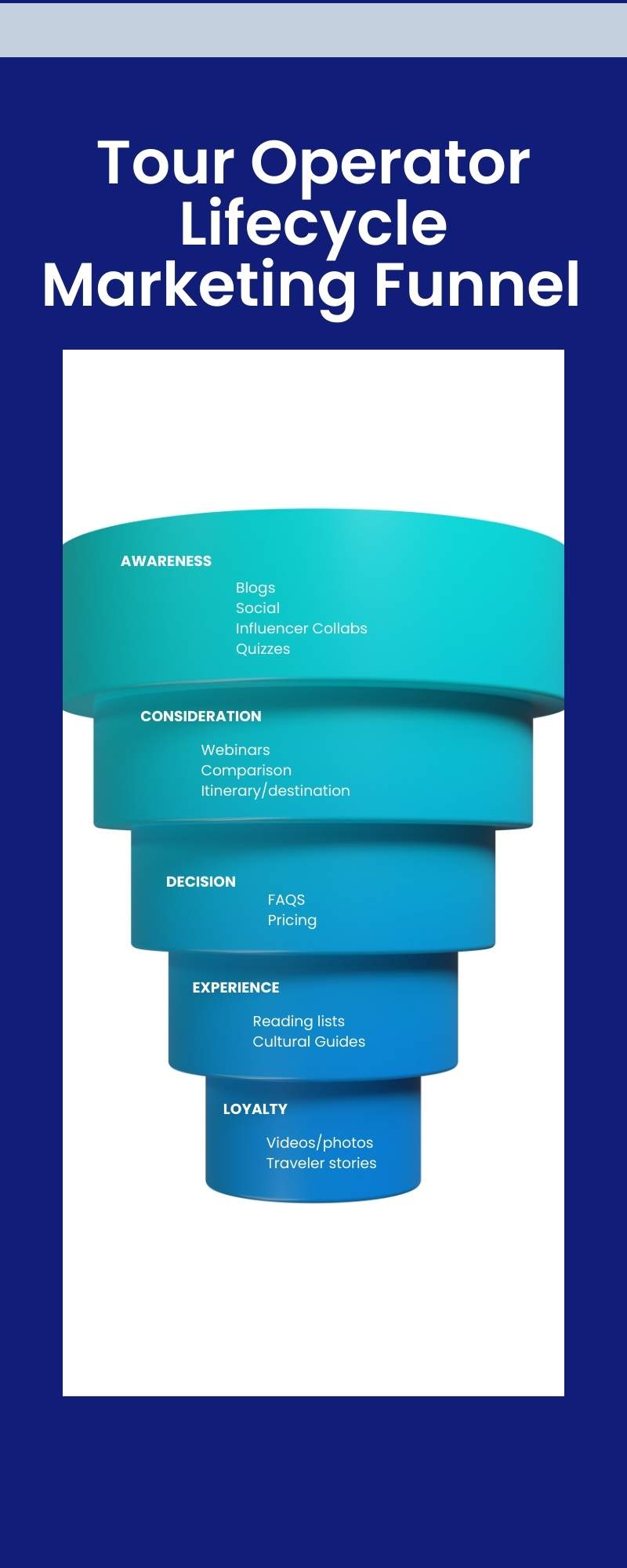
1. Awareness (Inspire and Attract)
Travelers aren’t ready to book yet — they’re still daydreaming. Your job here isn’t to sell; it’s to inspire. Awareness content should spark curiosity, highlight what’s possible, sell the magic, and put your brand on the radar before they even know they need you.
Goal: Get on the traveler’s radar and spark curiosity
Content focus: Aspirational, broad, shareable
Content Types:
- Blog posts on destinations (“10 Hidden Gems in Tuscany”)
- Short-form social video (Instagram Reels, TikTok) showcasing experiences
- SEO-friendly guides (“Best Time to Visit Patagonia”)
- Partnerships with travel influencers or guest articles
- Lightweight quizzes or inspiration tools (“Find Your Perfect Adventure Tour”)
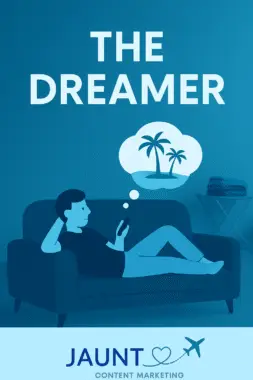
Meet Dan the Scroller.
He’s on his third “just five minutes on Instagram” break today, drooling over drone shots of Santorini while the laundry sits in the dryer for the fourth cycle. Dan isn’t looking to book — yet — but his daydreaming is your golden hour. Hit him with wanderlust-worthy stories, “where should you travel next?” quizzes, and those swipe-stopping photos. Because right now? He’s hungry for ideas, not itineraries.
2. Consideration (Educate and Differentiate)
Once the spark is lit, travelers start comparing options. This is where you show up as the smarter choice. Consideration content answers their questions, builds trust, and highlights what makes your tours different from the next operator on their list.
Goal: Move from “nice idea” to “real option” in their shortlist
Content focus: Practical, comparison-friendly, answers traveler questions
Content Types:
- Detailed itinerary pages with photos, videos, maps
- Comparison content (“Small Group vs. Private Tours in Egypt”)
- Customer testimonial videos
- Email nurture series with destination spotlights
- Webinars / live Q&A sessions with guides or experts
- Case studies / reviews (“How the Lopez Family Explored Iceland with Us”)
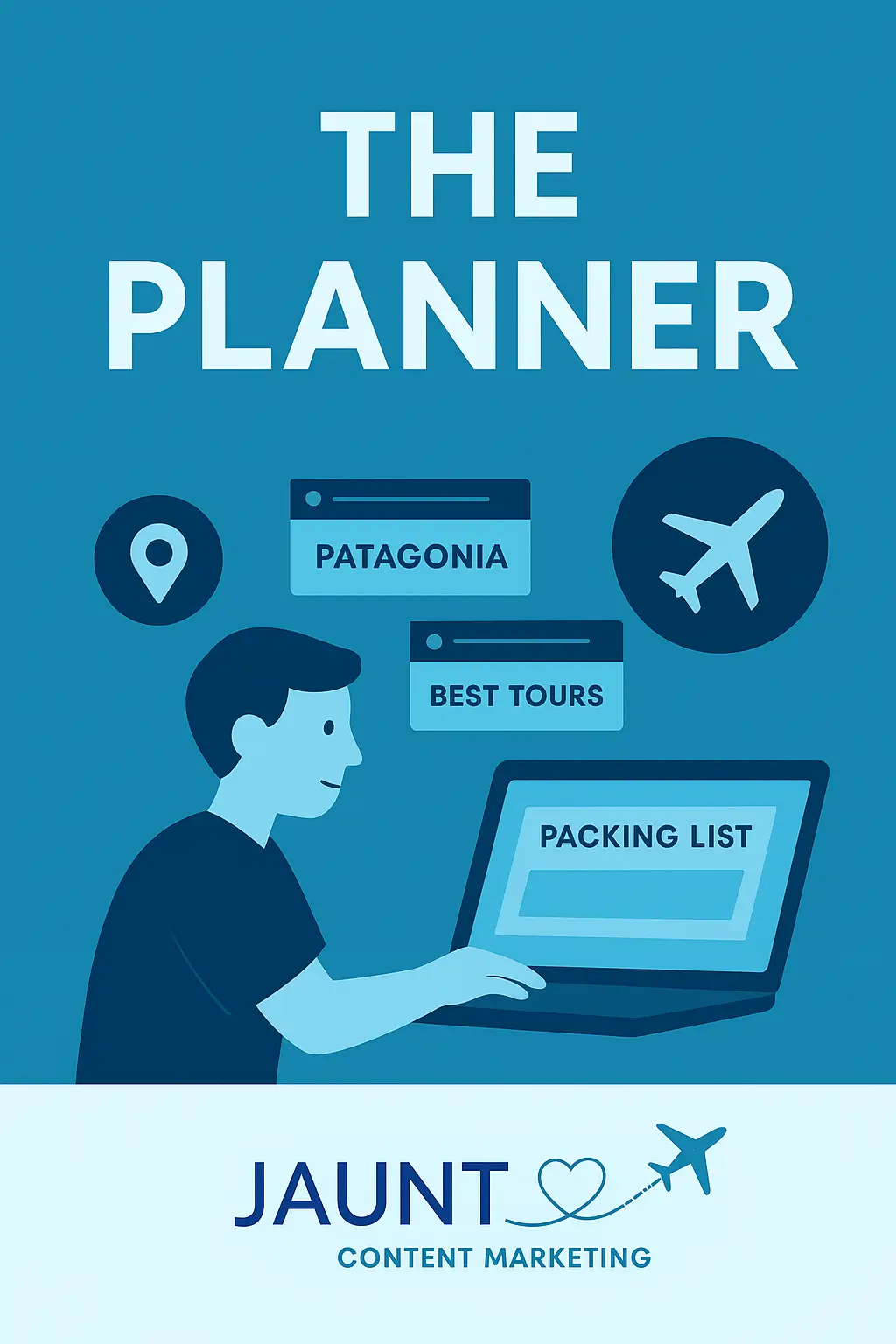
Say hi to Marco the Tab Collector.
He has 27 Chrome tabs open, all destinations, all tours, all “10 Best Things to Do in Patagonia” lists. His partner has already begged him to close at least three tabs, but Marco refuses. This is where your content earns trust: helpful blogs, comparison guides, and itineraries that make him say, “Finally — someone who gets it.” Win Marco’s heart, and you win his booking.
3. Decision (Convert and Book)
At this stage, hesitation kills conversions. Decision content should eliminate doubt, make the booking process clear, and reassure travelers they’re making the right choice. Think confidence-builders, not sales pressure.
Goal: Reduce friction and instill confidence
Content focus: Clear, persuasive, reassurance-driven
Content Types:
- Pricing pages with transparent inclusions/exclusions
- Information that highlights how your itineraries or experiences are different than other tour operators
- FAQs about deposits, cancellations, group sizes, packing lists
- Limited-time offers / urgency content (“Save 10% if you book by Sept 1”)
- Live chat or chatbot content with instant answers
- Customer success stories (“Why 95% of our travelers would book again”)
- Stories from past travelers
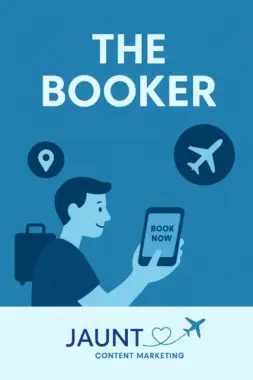
This is Pietro the Clicker.
He’s one “Confirm Reservation” button away from the trip of a lifetime — and the only thing standing between you and his credit card? A clunky booking process, unanswered questions, or MIA customer service. Give him confidence with testimonials, crystal-clear calls to action, and a checkout process smoother than an in-flight cocktail. He’s ready. Don’t trip him up now.
4. Engage (Anticipate)
The engagement phase is that sweet spot between “booked” and “boarding,” when anticipation runs high and every detail fuels the daydream. It’s your chance to turn pre-trip excitement into a deeper connection — so by the time travelers arrive, they already feel like they belong.
Goal: Get the traveler excited to go on their journey and provide them with content that will enhance their experience
Content Focus: Ways to prepare for their trip and start talking about the experience
Content Types:
- Pre-departure guides (packing lists, travel tips, cultural etiquette PDFs)
- Cultural guides and location notes that educate them about the places and things they are seeing. Provide them with content that they can bring home to help them remember the details of the places they saw and share their experiences with their friends and family. For example, a script for a slideshow when they return home
- Reading list of books about the destination
- “Meet Your Guide” content — bios, welcome videos
- A story about a historical event
- Spotify playlist with music from the destination
- Interactive quiz
- Countdown email series with travel facts
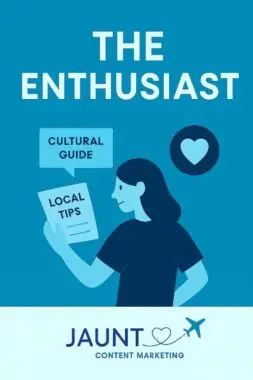
Meet Maria the Enthusiast.
Her countdown clock is on, her packing list is color-coded, and she’s already watched five YouTube videos about local customs. She’s equal parts excited and anxious — eager for reassurance, craving insider tips, and determined to make this trip “the one.”Here’s your cue to step in as her trusted guide. Feed her curiosity with pre-departure checklists, “meet your guide” stories, and local secrets that turn logistics into anticipation. Help her feel seen, prepared, and ready to dive in. Because when you nurture the journey before it begins, you’re not just delivering a trip — you’re shaping the story she’ll tell when she gets home.
4. Experience (Deliver and Delight)
The itinerary isn’t your only product — what you give travelers before, during, and after the experience shapes how they talk about your brand. Content here should prepare them, guide them, and add little moments of delight that turn a trip into a story they can’t wait to share. And reinforce and help them remember what they learned along the way.
Goal: Enhance the trip and make your guests want to travel with you again
Content focus: Service-driven, insider tips, content that enriches the journey and supplements what they learned
Content Types:
- Trip apps with itinerary, weather, reminders, and emergency contacts
- In-trip storytelling prompts (“Share your photos with #TourNameAdventures”)
- Surprise and delight content (personalized welcome video, digital postcards)
5. Loyalty and Advocacy (Retain and Refer)
A booking isn’t the end of the funnel — it’s the start of the next one. Post-trip content keeps the relationship alive, encourages referrals, and sets the stage for a return booking. This is where satisfied travelers become your best marketing channel.
Goal: Turn one-time travelers into repeat guests and brand advocates
Content focus: Personal, nostalgic, community-driven
Content Types:
- Post-trip thank-you emails with photo galleries or recap video
- Recipes of foods they ate
- Supplemental content that builds on what they learned and saw on the trip like a recommended reading list
- A photo book that comes to their home after their return
- Recommendations for future tours with similar themes and experiences that they may be interested in
- Traveler story features on your blog or social media
- Referral programs (“Bring a friend, save $200”)
- VIP traveler community (Facebook group, insider updates)
- Sneak peeks of new tours or “early booking” invitations
- Anniversary emails (“One year ago you hiked the Inca Trail with us — ready for your next adventure?”)
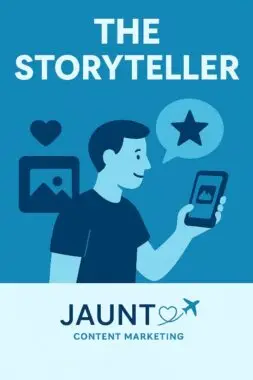
Enter James the Bragger.
He’s back from Morocco with 1,247 photos, 16 souvenirs, and a newfound passion for mint tea. He will not stop talking about the time he “accidentally” rode a camel. This is your time to keep the spark alive. Invite him to tell his story, tag your brand, and share his photos and favorite moments. And make it easy for him to bring friends along next time. Because every traveler like James is more than a booking — he’s your best storyteller, your word-of-mouth engine, and the start of someone else’s next great adventure.
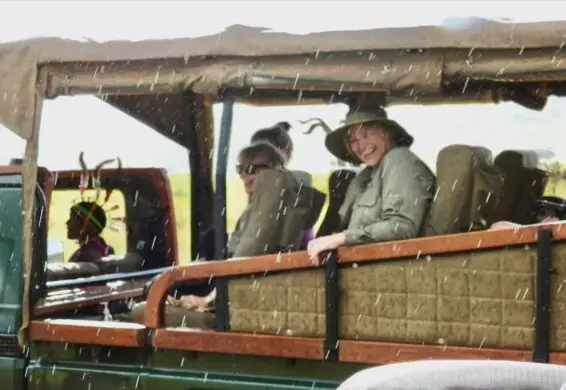
The magic is in mapping your new and existing content to this funnel and spotting gaps. And having a call to action at the end of every piece of content that guides them farther down the funnel. Most tour operators are heavy in Awareness (blogs, social posts) and Decision (itineraries, pricing), but light in Consideration and Loyalty — which are where conversions and repeat bookings really live.


